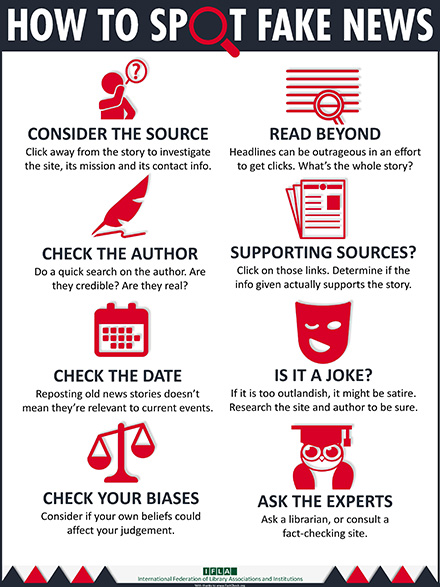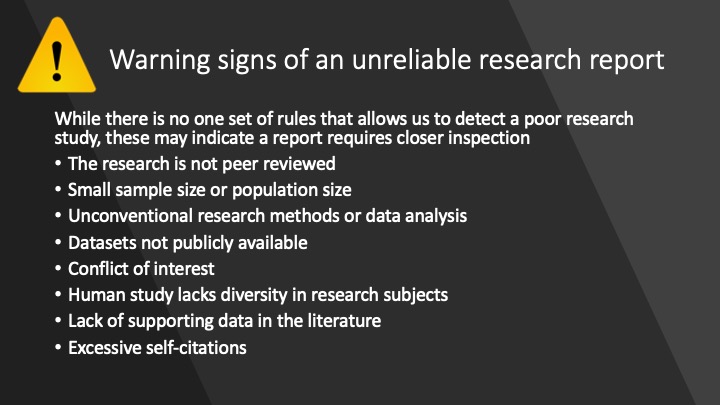Conducting Background Research in the Sciences
Literature Searches
Karri Haen Whitmer
Before addressing a research problem with an experiment, it’s important to conduct background research in order to learn what is already known about the problem. It’s a good idea to start any research project by making use of the resources at your institution’s library. The Iowa State University Library has several resource guides available that are specific for an area of study. These can make it much easier to search for the appropriate information for a particular type of research question. Here is the resource guide for Kinesiology at ISU: Kinesiology Research Guide at Iowa State University (external link)
Resource Types
There are many types of resources that may be valuable for a literature search. Primary literature includes original written works such as research published in scholarly journals. Primary literature is the ideal resource for academic work; however, the terminology used may be difficult to understand for beginners in a field of study. Secondary sources include books or review articles that summarize primary research findings. A good example of a secondary resource is a textbook. Today, various internet resources are popular for conducting research. For information on how to wisely use internet resources, please see the section on evaluating internet resources at the end of this chapter.
How to Read a Scientific Article
Reading a scientific article is a complex task.[1] The worst way to approach this task is to treat it like the reading of a textbook—reading from title to literature cited, digesting every word along the way without any reflection or criticism. Rather, you should begin by skimming the article to identify its structure and features. As you read, look for the author’s main points. Generate questions before, during, and after reading. Draw inferences based on your own experiences and knowledge. And to really improve understanding and recall, take notes as you read. This handout discusses each of these strategies in more detail.
Skim the article and identify its structure
Most journals use a conventional IMRD structure: An abstract followed by Introduction, Methods, Results, and Discussion. Each of these sections normally contains easily recognized conventional features, and if you read with an anticipation of these features, you will read an article more quickly and comprehend more.
Features of Abstracts
Abstracts usually contain four kinds of information:
- purpose or rationale of study (why they did it)
- methodology (how they did it)
- results (what they found)
- conclusion (what it means)
Most scientists read the abstract first. Others—especially experts in the field—skip right from the title to the visuals because the visuals, in many cases, tell the reader what kinds of experiments were done and what results were obtained. You should probably begin reading a paper by reading the abstract carefully and noting the four kinds of information outlined above. Then move first to the visuals and then to the rest of the paper.
Features of Introductions
Introductions serve two purposes: creating readers’ interest in the subject and providing them with enough information to understand the article. Generally, introductions accomplish this by leading readers from broad information (what is known about the topic) to more specific information (what is not known) to a focal point (what question the authors asked and answered). Thus, authors describe previous work that led to current understanding of the topic (the broad) and then situate their work (the specific) within the field.
Features of Methods
The Methods section tells the reader what experiments were done to answer the question stated in the Introduction. Methods are often difficult to read, especially for graduate students, because of technical language and a level of detail sufficient for another trained scientist to repeat the experiments. However, you can more fully understand the design of the experiments and evaluate their validity by reading the Methods section carefully.
Features of Results and Discussion
The Results section contains results—statements of what was found, and reference to the data shown in visuals (figures and tables). Normally, authors do not include information that would need to be referenced, such as comparison to others’ results. Instead, that material is placed in the Discussion—placing the work in context of the broader field. The Discussion also functions to provide a clear answer to the question posed in the Introduction and to explain how the results support that conclusion.
Distinguish the Main Points
Because articles contain so much information, it may be difficult to distinguish the main points of an article from the subordinate points. Fortunately, there are many indicators of the author’s main points:
Document level
- Title
- Abstract
- Keywords
- Visuals (especially figure and table titles)
- First sentence or the last 1-2 sentences of the Introduction
Paragraph level: words or phrases to look for
- surprising
- unexpected
- in contrast with previous work
- has seldom been addressed
- we hypothesize that
- we propose
- we introduce
- we develop
- the data suggest
Generate questions and be aware of your understanding
Reading is an active task. Before and during your reading, ask yourself these questions:
- Who are these authors? What journal is this? Might I question the credibility of the work?
- Have I taken the time to understand all the terminology?
- Have I gone back to read an article or review that would help me understand this work better?
- Am I spending too much time reading the less important parts of this article?
- Is there someone I can talk to about confusing parts of this article?
After reading, ask yourself these questions:
- What specific problem does this research address? Why is it important?
- Is the method used a good one? The best one?
- What are the specific findings? Am I able to summarize them in one or two sentences?
- Are the findings supported by persuasive evidence?
- Is there an alternative interpretation of the data that the author did not address?
- How are the findings unique/new/unusual or supportive of other work in the field?
- How do these results relate to the work I’m interested in? To other work I’ve read about?
- What are some of the specific applications of the ideas presented here? What are some further experiments that would answer remaining questions?
Draw inferences
Not everything that you learn from an article is stated explicitly. As you read, rely on your prior knowledge and world experience, as well as the background provided in the article, to draw inferences from the material. Research has shown that readers who actively draw inferences are better able to understand and recall information.
Template for Taking Notes on Research Articles: Easy access for later use
Whenever you read an article, pertinent book chapter, or research on the web, use the following format (or something similar) to make an electronic record of your notes for later easy access. Put quotation marks around any exact wording you write down so that you can avoid accidental plagiarism when you later cite the article.
Complete citation. Author(s), Date of publication, Title (book or article), Journal, Volume #, Issue #, pages:
If web access: url; date accessed
Key Words:
General subject:
Specific subject:
Hypothesis:
Methodology:
Result(s):
Summary of key points:
Context (how this article relates to other work in the field; how it ties in with key issues and findings by others, including yourself):
Significance (to the field; in relation to your own work):
Important Figures and/or Tables (brief description; page number):
Cited References to follow up on (cite those obviously related to your topic AND any papers frequently cited by others because those works may well prove to be essential as you develop your own work):
How to Spot Fake News

Wikipedia
Wikipedia is broadly misunderstood by faculty and students alike.[2] While Wikipedia must be approached with caution, especially with articles that are covering contentious subjects or evolving events, it is often the best source to get a quick, consensus viewpoint on a subject. Because the Wikipedia community has strict rules about sourcing facts to reliable sources, and because authors are asked to adopt a neutral point of view, its articles are often a good introduction to a subject on the web. However, be advised that anyone can edit Wikipedia, and those who write or add to articles may not be experts. Sometimes the claims in Wikipedia articles are blatantly erroneous.
Despite this, the focus on sourcing claims in Wikipedia has a beneficial effect. If you can find a claim expressed in a Wikipedia article, you can follow the footnote on the claim to a reliable source, which may be a primary resource. In this way, scholars can benefit from using Wikipedia to quickly find authoritative sources for claims, and use these primary resources as a starting point for investigating a question.
Evaluating Internet Resources: the CRAAP Test
When you search for information, you’re going to find plenty… but is it accurate and reliable (Fig. 1)? [3] You will have to determine this for yourself, and the CRAAP Test can help. The CRAAP Test is a list of questions to help determine if the information you find is good quality. Your information source may not meet every criterion on this list; different criteria will be more or less important depending on your situation or need. So why guess? Is your source giving you truly credible and useful information or just fake news?
Currency: The timeliness of the information.
- When was the information published or posted?
- Has the information been revised or updated?
- Is the information current or too out-of-date for my topic?
- Are all the links functional or are there dead links?
Reliability: Where did the author get this information?
- Does the creator provide links to sources for data or quotations?
- Do those sources seem reliable?
- Is the information accurate and error-free?
- Can the information be corroborated with another source?
Authority of author: Who is the immediate source of the information?
- Who is the author/publisher/source/sponsor?
- Are the author’s credentials or organizational affiliations given?
- What are the author’s credentials or organizational affiliations?
- What are the author’s qualifications to write on the topic?
- Is there contact information, such as a publisher or e-mail address?
- Does the URL reveal anything about the author or source? Examples: .com .edu .gov .org .net
Authority of organization: Does the resource have a reputable organization behind it?
- Is there a reputable organization behind it?
- What is the organization’s interest (if any) in this information?
- What is the domain (.edu,.com,.org,.net,.uk,.k12,etc)?
- Is the page hosted by an individual? Search who owns the site using a “whois” search engine such as: http://whois.domaintools.com.
- Who else links to the site?
Purpose: The reason the information exists.
- What is the purpose of the information? to inform? teach? sell? entertain? persuade?
- Do the authors/sponsors make their intentions or purpose clear?
- Is the information fact? opinion? propaganda?
- Does the point of view appear objective and impartial?
- Are there political, ideological, cultural, religious, institutional, or personal biases?

Please cite:
Haen Whitmer, K.M. (2021). A Mixed Course-Based Research Approach to Human Physiology. Ames, IA: Iowa State University Digital Press. https://iastate.pressbooks.pub/curehumanphysiology/
- © Mar 28, 2008 The Cain Project in Engineering and Professional Communication. Textbook content produced by The Cain Project in Engineering and Professional Communication is licensed under a Creative Commons Attribution License 2.0 license. Download for free at http://cnx.org/contents/d85e82ee-f854-4953-a194-8ec1baf39348@1 ↵
- Adapted from Web literacy for student fact checkers, by Michael A. Caulfield. CC by 4.0 International license ↵
- Adapted from https://uri.libguides.com/start/craap CC by 4.0 International license. ↵

